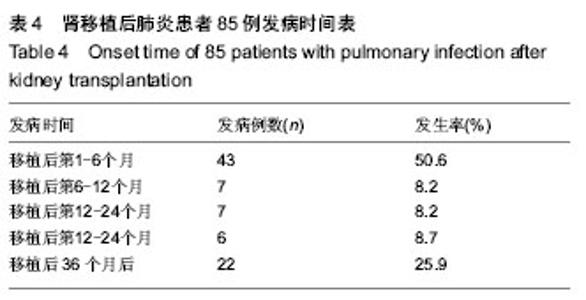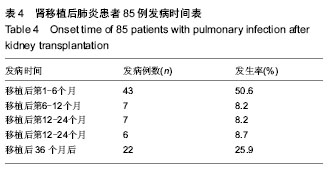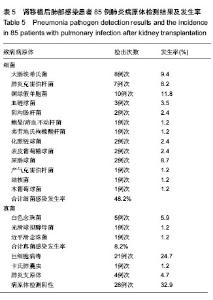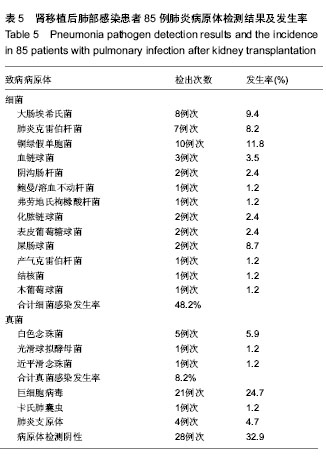| [1] 薛呋,刘克普,马帅军,等.分期治疗肾移植岳的重症肺部感染[J].中国组织工程研究,2013,17(53):9172-9175.
[2] San Juan R,Aguado JM,Lumbreras C,et al. clinicalcharacteristics and risk factors of late infection in solid-organtransplant recipients:data frOm the RESITRA study group.Am J Transplant. 2007:7(4):964-971.
[3] 李静波,吴刚,张静萍,等. 肾移植术后肺部感染的病原体分析与诊治[J].中华医院感染学杂志,2010,20(23):3669-3671.
[4] Mysorekar VV,Rao SG.Cytomegalovirus pneumonia with pulmonary mucormycosis. Indian J Pathol Microbiol. 2008; 51(2):294-295.
[5] 赵建平,周戈会,张蕙兰,等.糖皮质激素治疗巨细胞病毒肺炎[J].中华器官移植杂志,2007,28(11):678-680.
[6] SchrÖeger R,Michelon T,Fagundes I,et al.Atigenmia for cytomegalovirus in renal transplantation :choosing a cutoff for the diagnosis criteria in cytomegalovirus disease. transplant Proc.2005;37(6):2781-2783.
[7] 刘懿禾,于立新,王峪,等.肾移植术后肺部感染的常见病因和诊治原则[J].中国医学科学院学报,2009,31(3):276-279.
[8] 杨其顺,姜伟,龙伟,等.肾移植后重症肺炎23例的救治体会[J].中华器官移植杂志,2014,35(10):632-633.
[9] 中华医学会呼吸病学分会.急性肺损伤/急性呼吸窘迫综合征的诊断标准[J].中华结核和呼吸杂志,2000,23(4):203.
[10] 杨淑蓉,贾会学,李六亿.肾移植术后肺部感染的调查与分析[J]. 中华医院感染学杂志,2009,19(2):162-163.
[11] Sarmiento JM, Dockrell DH,Schwad TR, et al.Mycophenolate mofetil increases cytomegalovirus invasion organ disease in renal transplant patients. Clin Transplant.2000;14(2): 136-138.
[12] 苗芸,于立新,邓文锋,等.肾移植受者与肝移植受者术后肺部感染的比较[J]. 南方医科大学学报,2010,30(7):1679-1681.
[13] Rubin RH. The therapeutic prescription for the transplant patient. Transpl Infect Dis.2002;4(1):1-2.
[14] 周梅生,朱有华,张佩芳,等 肾移植患者免疫抑制剂调整与预防呼吸道感染的关系[J].中华器官移植杂志,2005,26(10): 598-600.
[15] 罗晓辉,薛武军,燕航,等.肾移植术后肺部感染状态下免疫抑制剂的调整[J].中华器官移植杂志,2010,31(9):524-527.
[16] 汪泽厚,孙斌,姚志勇.等.肾移植受者重症肺部感染救治期闯免疫抑制剂的调整[J].免疫学杂志,2008,24(2):213-214.
[17] 郭君其,叶永峰,谭建明,等.肾移植肺部感染患者停用免疫抑制剂期间的临床观察[J].福州总医院学报,2007,14(1,2):47-49.
[18] 王筱啸,陈松,喻俊.肾移植后早期间质性肺炎的临床病程进展规律及治疗30例[J].中华器官移植杂志,2014,35(5):282-286. |



